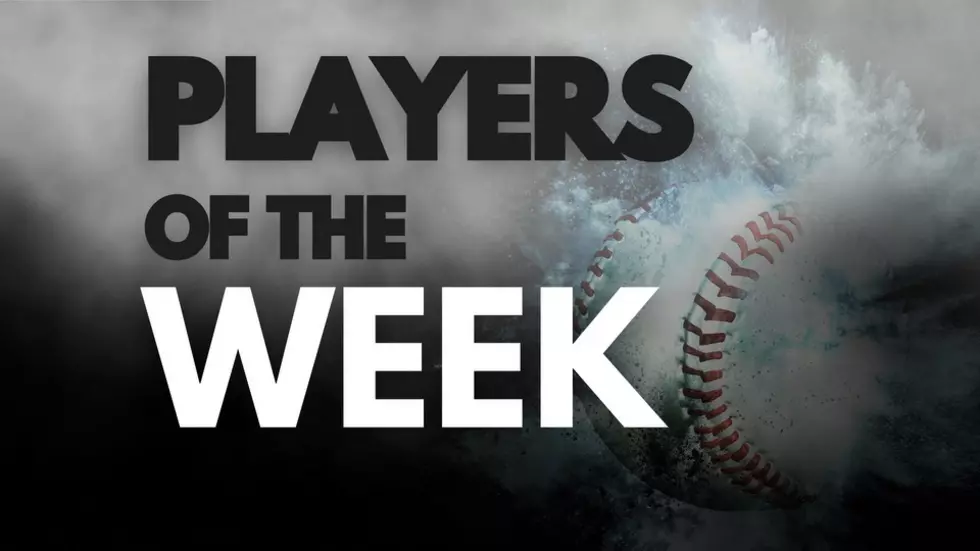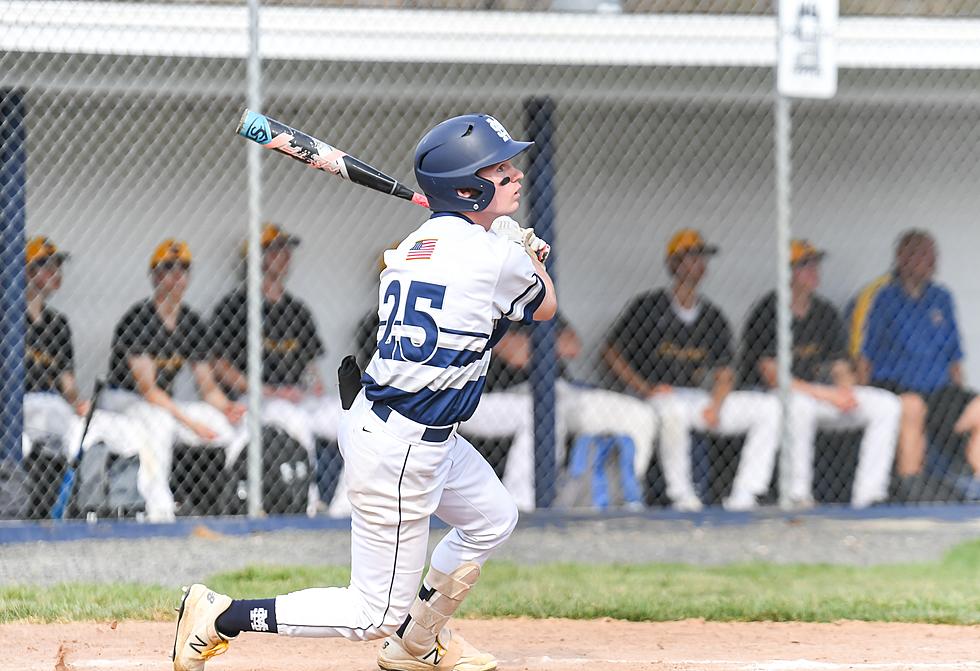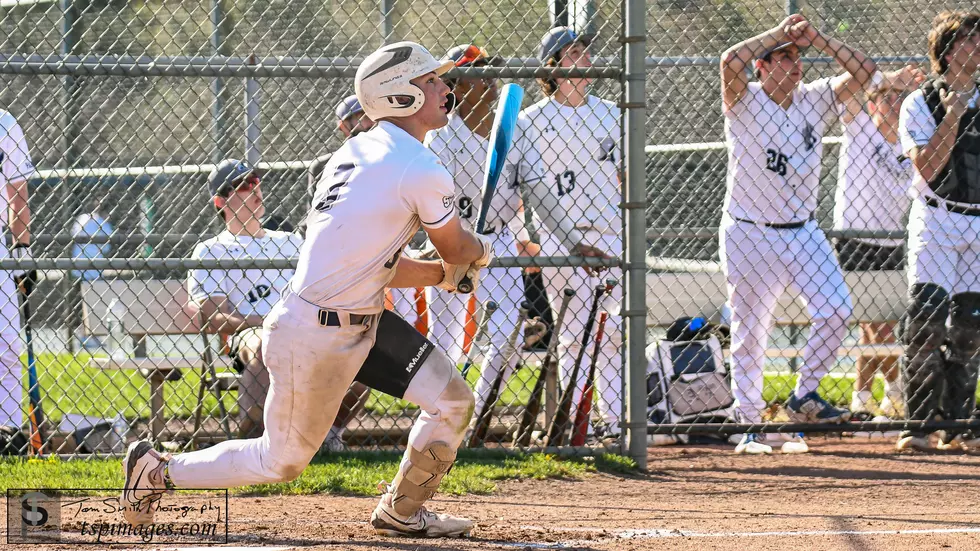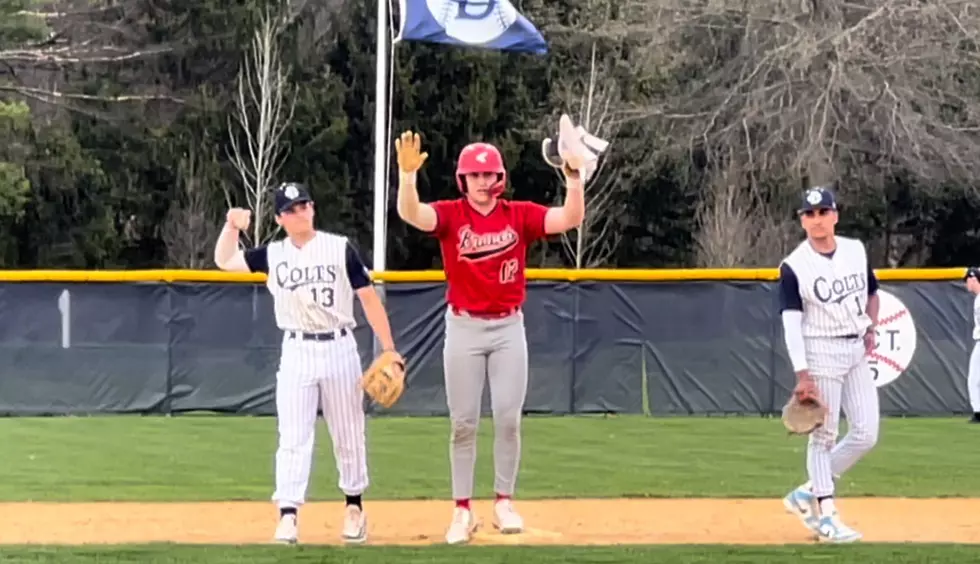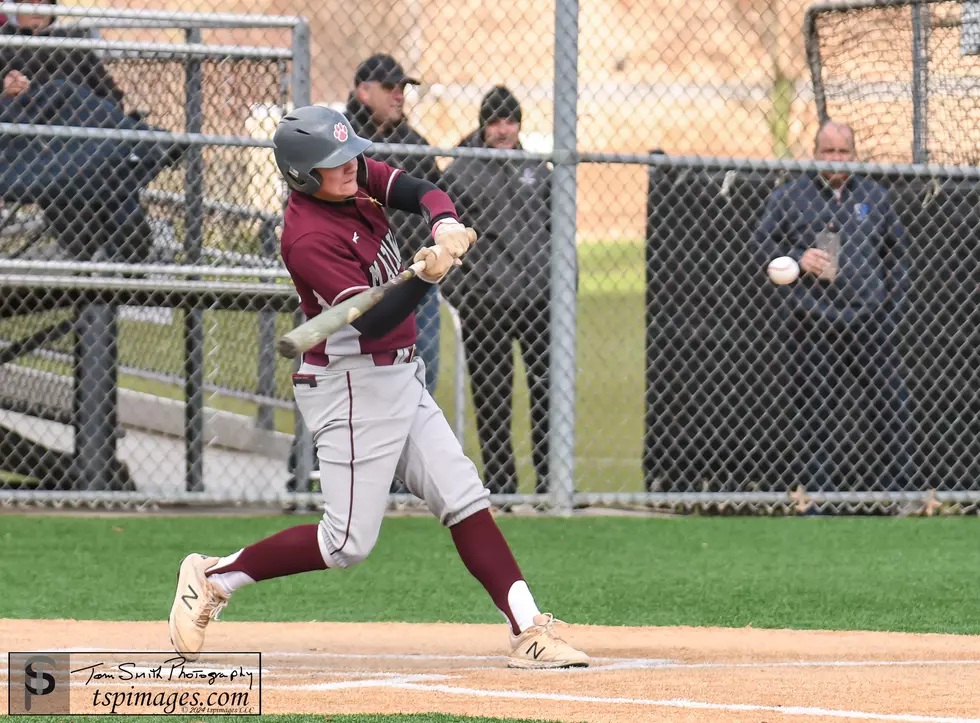
Baseball – Cranford is Right About the Pitch-Counting Error in the Group 3 Final, But Not in Its Protest

Instead of waking up Sunday morning basking in their NJSIAA Group III championship victory, the Middletown North players and coaches instead are waiting to hear if their championship even counts.
Saturday night, at a little after 10 p.m., Cranford athletic director Darren Torsone submitted an email to NJSIAA executive director Colleen Maguire to officially protest Saturday's Group III Championship result and request that Middletown North forfeit the game due to allowing starting pitcher Colin Dowlen more than the allowed number of pitches in a single game.
According to a source, the NJSIAA had responded to the email stating simply that the appeal was under review.
Let's start with what is now obvious: based on multiple accounts (including mine) and the archived stream of the game, Dowlen did exceed the single-game limit of 110 pitches. By rule, he should have been allowed to throw 112 because he hit the 110 threshold in the middle of an at-bat and at the conclusion of that at bat -- a flyout for the second out in the top of the seventh inning with two runners on and the game tied, 4-4 -- his pitch count stood at 112.
The scoreboard at Bob DeMeo Field reflected this reality, but Middletown North coach Ryan McCabe left Dowlen in the game to throw his 113th pitch and chaos ensued. Cranford coach Dennis McCaffery, who said after the game that he instructed his player, Shea Grady, to take the first pitch of the at-bat knowing that it meant Dowlen would exceed the limit, called timeout and brought the issue to the home plate umpire, who then conferred with the pitch-counter.
"I called timeout and when I was walking down the first-base line to talk to the home plate ump, I was sure we won a state championship," McCaffery said.
Without getting into the very specific details again (you can read those here) and to make a long story slightly less long, the pitch-counter told McCaffery that Dowlen had not yet exceeded the limit.
On top of the question about Dowlen's pitch count, the scoreboard and several unofficial pitch counts among the press (including mine) and in the Cranford dugout had Cranford starter Will Gallagher at 98 pitches through seven innings, but the pitch-counter informed McCaffery when the seventh inning was over that his count had him at 109.
So, with that in mind, I don't think it is up for debate that the pitch-counter messed up Saturday. Whether it cost Cranford the game is not nearly as certain: Dowlen faced two batters more than he should have been allowed and his reliever, Matt Adamson, came on and retired two batters after hitting the first batter he faced in the top of the eighth inning.
Either way, Cranford is deserving of some sort of acknowledgement from the NJSIAA that a mistake was made by the NJSIAA-assigned pitch-counter.
Cranford, however, is not asking for just an apology. It is looking to change the outcome of the game and Torsone and McCaffery are citing the following page of the NJSIAA Pitch Count Rule as its basis for the protest.
Reading page one of the rule, which NJ Advance Media cites numerous times in its report on the protest, the evidence against Middletown North could be interpreted as damning.
"They used a pitcher for more pitches than the rule allows them to and we took our guy out before it was an issue," McCaffery said. "They left their guy to face two more batters than they should have been allowed to. The rule clearly states it's the coaches' responsibility to keep track of pitch counts and if a pitcher throws an illegal pitch, the consequences are the game is forfeited."
The problem, however, is the rule is not limited to that one page. Here is page two.
Page two introduces the "Adult Pitch Counter" as well as details regarding exactly how to handle a player approaching -- or exceeding -- 110 pitches. Let's go line-by-line.
While it would normally make sense to start at the top, the most important establishing line for this case is the last line of paragraph two:
NJSIAA will provide "Adult Pitch Counter" at all neutral site games (State Semi-Final and Group Final games).
This line supersedes the first line of page two, which says the "home school shall provide an official Adult Pitch Counter." The state semifinals are no longer a neutral site game, but we're talking about the Group Finals, which still apply.
Let's go back to the top:
(The NJSIAA) shall provide and "Adult Pitch Counter" and this person shall count pitches for both schools. This count is official.
So far, advantage Middletown North, at least via page two. Regardless of what the scoreboard, Cranford's dugout, my book or the book of any other media member had, the Adult Pitch Counter (APC) has the official count.
But what if the counter is wrong? Let's continue:
Preferably, the Official Pitch Counter shall be seated in an area near the backstop and equally accessible to both teams.
Cranford might have a gripe here. The official APC was indeed seated behind the backstop, but was considerably closer to the Middletown North dugout. Still, while McCabe might have had slightly easier access to the APC, McCaffery could still get to him by walking along the backstop to his area, although he maintains he was not aware of where the APC was seated until the umpire went over to him following McCaffery's initial appeal.
As for why the APC was seated where he was, there were several press tables for working media and, I can assure you, they fill up quickly (which is why we get there early). Also, the table on the other end of the backstop (near the Cranford dugout) is where the power source was, so working media called dibs on that table well before the game. Ultimately, this is not the major issue but it could explain some of the more pertinent ones that we will address shortly. Moving on:
Pitch counts must be verified with representatives of both teams after each half-inning.
Here is where Cranford's case begins to loosen. McCabe said he was checking with the APC after each inning and abiding by the numbers he was getting back. McCabe only confirmed he was keeping tabs on Dowlen's pitch count. McCaffery, meanwhile, did not bring up the issue of a count discrepancy until he determined Dowlen to be over the limit. He told NJ.com that he did not do regular checks with the Official APC because the count was on the scoreboard and it matched the count he had in the dugout. Had he or one of his coaches checked regularly throughout the game, it could have been addressed earlier -- likely in the first inning, when McCaffery says the error appeared to take place, based on the information he got from the Official APC.
If there is a discrepancy between the Official Pitch Counter and one or both team's representatives, the following process shall be followed:
Okay, this should get us somewhere.
1. If both teams agree on an pitch number, that number shall recorded in place of the Official Pitch Counter.
Obviously, the Cranford and Middletown North dugouts did not agree on a number that would have made Dowlen's first pitch to Grady illegal. As it turned out, they all agreed to a count in order to move the game along, but McCaffery still took issue with it after the game ended. McCabe, meanwhile, claims he was going by what the Official APC told him after each inning. What's next?
2. If both teams disagree on a pitch number, the Official Pitch Counter's number shall be recorded.
It's not clear at the moment how exactly it transpired, but it appears the two teams and the Official APC arrived at a sort of compromise after he looked over his accounting. He initially indicated that Dowlen was at 96 pitches after what was actually his 112th pitch, but amended that number to 105 after looking at it again. It's a huge discrepancy, one that even prompted McCabe, by his account, to ask the official APC in the fourth inning if they should all get together and make sure everyone was on the same page given the difference between his count and what was posted on the scoreboard. By McCabe's account, the response he got was "I don't have anything to do with (the scoreboard count)."
McCaffery, meanwhile, tried to do all of his accounting at once, when the discrepancy was brought up in the seventh inning. The Cranford coach told NJ.com and Shore Sports Network that upon determining that the Official APC missed nine pitches in the first inning, he asked then asked him to go through his entire book, inning-by-inning, to see where the remainder of the difference was. According to McCaffery, the APC refused the home plate umpire backed the official in hopes of moving the game along (more clarification later).
3. In the event that the Official APC does not show or must leave because of an illness or other emergency, both coaches must confer after each inning to confirm the pitch count(s). In the event of discrepancy, the Home Team count shall be official.
We'll leave that first sentence alone, but it may or may not be worth mentioning McCabe had a different pitch count on Dowlen than the opposing dugout did in the Group III semifinal at Delsea on Monday. McCabe did not win out on that dispute, because Delsea was the home team. It's not pertinent to this case since there was an Official APC present, so let's move on.
We also already covered the next paragraph, which establishes the existence of an Official APC provided by the NJSIAA for neutral site games. On to the next paragraph.
Once the umpires leave the confines of the field, the pitch counts are final.
This is the lone line unique to page two cited in the NJ.com story that reported Cranford's appeal and it is a tough one to overcome from Cranford's perspective. What makes this situation unique is because there was a stream of the game, there is a means by which to chart the pitches again and verify that Dowlen went over the limit. Unfortunately for Cranford, the rules don't offer coaches an opportunity to challenge decisions via video replay during the game, let alone after it. In this case, it also explicitly states that when the umpires left the field, whatever the Official APC -- who we already have established has the final say in disputes over the official number while the game is in progress -- had for his number is codified.
The Home Coach shall report the the Home and Visitor pitch counts on the njschoolsports.com website within 24 hours of the game's conclusion.
This line does not apply to the dispute because NJ.com had multiple reporters on site to enter the information themselves. This part of the rule is meant to apply to games that are not covered by NJ.com and do not have an NJSIAA-assigned APC.
Now, we get to the final paragraph of page two and it would appear to be the section of the rule that should, effectively, end the protest.
Official APC shall inform both coaches and the Plate Umpire when a pitcher reaches the 110-pitch count threshold. The Plate Umpire shall momentarily stop the game and resume immediately when he is certain both coaches are notified.
McCabe was not notified by the APC before Dowlen threw his first pitch to Grady because the APC did not have Dowlen at or beyond the limit at that time. So, now what?
In the event this is not done, there is no basis for protest.
And there it is. The Official APC is the official counter and he alerted neither the umpire nor the coaches that the 110-limit had been reached. McCaffery waited until pitch No. 113 to bring the discrepancy to the attention of the umpire, when it might have actually been more advantageous to Cranford's appeal to have stopped the game before Dowlen threw that first pitch to Grady. Had McCaffery at least brought it to the attention of the officials and McCabe before what would have been the first illegal pitch, there might at least be a hope for this appeal on the basis that at least somebody brought it up.
It says it right in the rule: Without that notification from the Official APC after Dowlen's final legal pitch, there is no basis for protest. The NJSIAA will have to investigate further and confirm that there was indeed no notification from the Official APC, but the whole dispute started when McCaffery brought the matter to the umpire, who then checked with the counter. The umpire checked with the counter because, to that point, he had not been told any limit had been reached.
Without that notification, there can be no protest.
There is one final line on page two and it is the bold-typed line that Cranford's appeal featured most prominently as its proverbial smoking gun. It also appears on page one and is meant to pertain how pitch counts throughout a five-day period are tracked.
Coaches are responsible for their pitcher's pitch count at all times.
It's understandable why someone might interpret this as coaches being responsible for the actual pitch count. Unfortunately, however wrong he was, Saturday's official APC has the final say on-site as to what the pitch count is. As long as McCabe was keeping tabs with him, he was keeping up with his responsibility for monitoring the pitch count.
As backwards as it sounds, it was the Cranford staff -- which had what should have been the correct number -- that did not keep track of the official pitch counts in the game at all times. They trusted their numbers were at least close to with the Official APC had and, as it turned out, they placed too much faith in the APC.
That's what makes this such a frustrating case. Cranford is in the right about what really happened, but going by the book, once it was established there was a discrepancy, the umpires and the NJSIAA followed the letter of the law and arrived at a conclusion that follows the protocol for such a situation.
The original sin here is the miscount of the pitches by the official counter, but there is not a direct way to trace the rules to the feet of McCabe and the Middletown North team: it may be the coaches' responsibility to keep track of pitch counts, but which pitch counts? The actual ones that are counted in the dugout or the ones counted by the official assigned to count them? McCaffery counted one, McCabe counted the other (and probably both). One was right, but one was official.
Is there a is a moral argument that McCabe should have "done the right thing" and pulled Dowlen, both for competitive and safety reasons? Sure, and it's one I might even take up if that is what was on the table. Pitching with four days of rest between starts is not something Dowlen -- who was shut down for two weeks in May 2021 with a non-structural arm injury -- had done in his career and asking him to pitch at all, let alone throw 120 actual pitches, is demanding a lot from a 19-year-old arm.
It is also, however, hard to tell a competitor like Dowlen and a group of high-school baseball players competing to win one more game in order to win a championship that the best pitcher on the team can't pitch to two more batters, even though the officials on site are allowing it. It's possible his well-being is at stake, but it's hard to know that throwing 10 more pitches is putting him in harm's way or if he was already in harm's way since some point much earlier in the game.
The state drew up the pitch-count rule to both limit excessive overuse of pitchers while also giving athletes and coaches some breathing room to compete. That was the move toward pitcher's safety, whether sufficient, insufficient, or beyond sufficient. Once the rule is established, it should be enforced with fair competition in mind. The design was for safety, enforcement is for competitive integrity. If it is not enforced correctly, that is on the officials, not the teams.
McCaffery said it is not his job to run the other team's pitcher by pointing out the pitch limit before an illegal pitch is throne. He was looking out for the best interest of his team and trying to win a state championship.
By the same token, if McCabe realizes the official pitch-counter is giving his ace extra pitches to work with, he may determine it's in the best interest of his team to leave Dowlen out there. Both coaches looked past the well-being of Dowlen and managed to win a championship. That the officials missed the infraction is not the fault of either of the coaches for competing to win; it's on the officials for not enforcing the rule properly.
The 2022 Group III championship will long be known as the game in which a pitcher on the winning team threw more pitches than he should have been allowed to, maybe even more than it's remembered as Middletown North's first ever NJSIAA group championship. And that's a shame. It should probably lead to a strong examination of pitch-count protocol so that this does not happen again.
It should not, however, change the fact that Middletown North is the Group III champion in 2022. However unfair it might be to the heartbroken Cranford side.
More From Shore Sports Network


